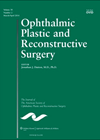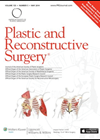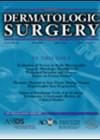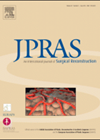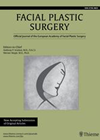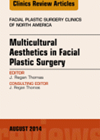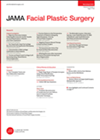
Journal Reviews
Outcomes and complications of supramaximal levator resection
This is a report of 35 children with unilateral congenital ptosis who underwent a supramaximal levator resection, involving extensive dissection of levator including cutting Whitnall’s ligament. The average preoperative margin reflex distance to the upper lid (MRD1) was 0.5mm, and...
Fat grafting as therapy for Raynaud’s
The authors have adapted the technique of lipo-filling, previously described for rejuvenation of the hand, to achieve symptom reduction in patients with primary and secondary Raynaud’s that had previously failed to respond to medical treatments. The majority of the subjects...
Platelet-rich plasma from androgenetic alopecia: a pilot study
The authors demonstrate some encouraging results in this pilot study, exploring the benefit of injecting platelet rich plasma (PRP) into the scalp on patients with androgenetic alopecia. This suggests the need to now proceed with a randomised control study to...
Is sclerotherapy useful for cherry angiomas?
Cherry angiomas are common, often proving to be an irritation for patients as they tend to be deemed cosmetically unattractive, particularly if large numbers start to develop. This is a common condition I see at my clinic so I am...
Superiorly based nasolabial flaps
This interesting paper takes the common or garden nasolabial flap to new extremes. The flap is based on the contralateral superior orbital artery and behaves as an axial patterned flap as far as the alar rim, becoming a random patterned...
Abdominal problems following breast reconstruction using lower abdominal flaps
Abdominal problems following transverse rectus abdominis myocutaneous (TRAM) and deep inferior epigastric perforators (DIEP) flaps are well recognised in these otherwise excellent methods of breast reconstruction. The authors reviewed 399 patients, of whom 57.7% had surgical complications although most of...
One stage nasal reconstruction with local flaps
This is an excellent and authoritative review of an often difficult and controversial clinical subject. Because of increased education and earlier diagnosis of skin tumours, surgeons are being presented with an increasing number of defects with limited size and depth....
Free style facial artery perforator flaps for nasal reconstruction
This is an update from the team of authors that originally described the free style facial artery perforator flap, for one stage nasal reconstruction, in 2009. They now update after 10 years of experience with these freestyle facial artery perforator...
Ethnic characteristics of the hair
The authors of this article discuss various aspects of ethnic differences in the field of hair restoration. They categorise three ethnic groups: Asian, White and African. In the article anatomic and hair characteristics are introduced. Understanding the follicle shape, calibre...
Three-dimensional imaging of the supratip after lower lateral cartilage repositioning
Cephalically positioned lower lateral cartilages (LLCs) contribute to the bulbous-appearing nasal tip. Repositioning of the LLCs removes volume created in the nasal sidewall / supratip regions leading to better tip refinement. This reshaping of the tip is ameliorated by application...
Non invasive simple reshaping of pinnae
The authors of this paper show the results of a prospective controlled in vivo animal model study where the pinnae of 18 New Zealand white rabbits were subjected to electromechanical reshaping (EMR) and three months postoperative splinting. Six voltage and...
Nasal osteotomies
The authors performed a prospective cadaveric study (N=20). They evaluated different fracture patterns in order to define the necessity for performing paramedian or transversal osteotomies. To do so, the cadavers were divided into two groups. Ten had a paramedian osteotomy...

